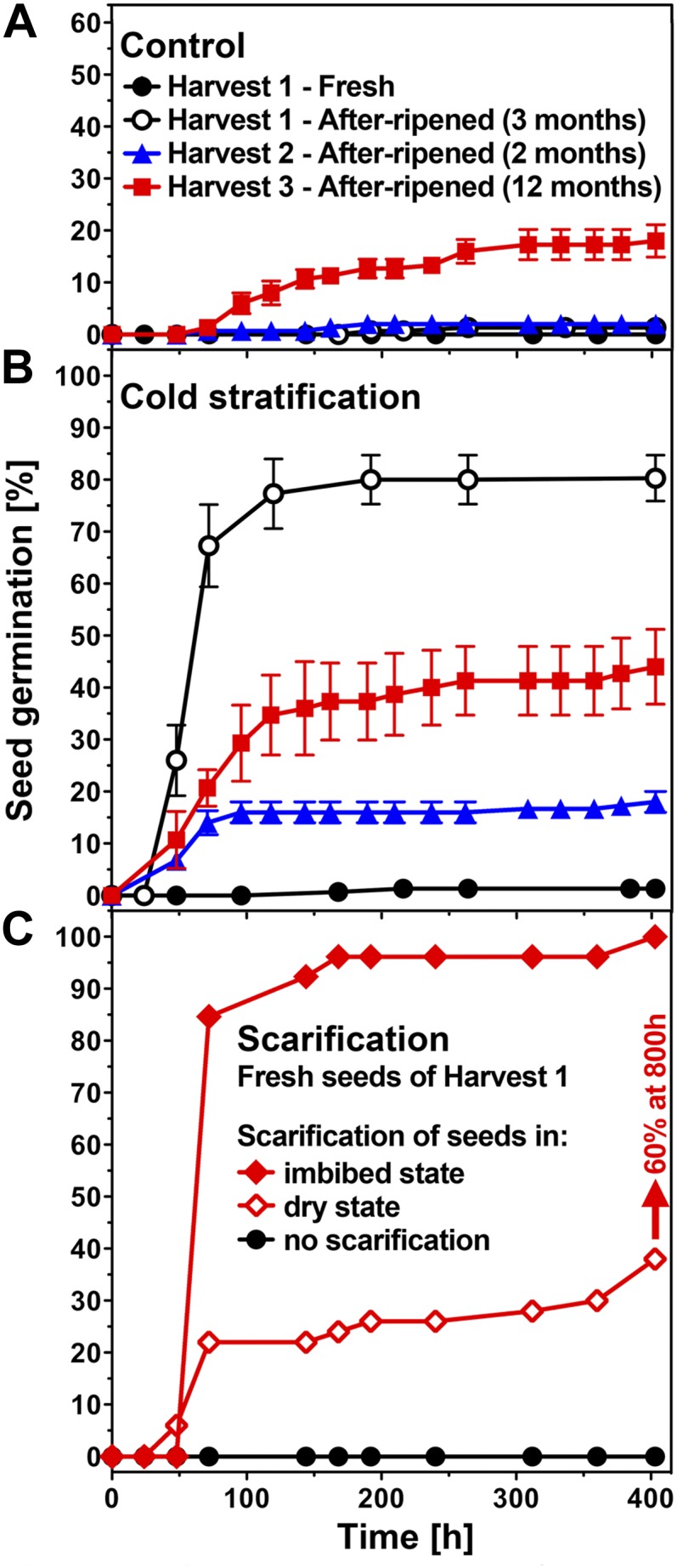Figure 3.

Primary physiological dormancy of L. papillosum seeds and its release by after-ripening, cold stratification, and scarification. A, Germination kinetics of imbibed L. papillosum seed populations. The primary dormancy of freshly harvested mature (fresh) seeds was not appreciably released by seed after-ripening. Different harvests and dry storage periods/conditions were compared. Harvest 1 (phytochamber-grown) seeds were after-ripened following removal from the mother plant by dry storage at room temperature for 3 months. Harvest 2 (phytochamber-grown) seeds were after-ripened on the dried mother plant for 2 months. Harvest 3 (greenhouse-grown, “natural” conditions) seeds were after-ripened on the dried mother plant for 12 months. B, The effect of cold stratification (7 d at 4°C preincubation) on seed dormancy of fresh and after-ripened seeds. Note that cold stratification did not release the dormancy of fresh seeds and that differences in the effectiveness of cold stratification depend on after-ripening storage conditions. C, Effect of scarification on imbibed (coat removal; i.e. embryo rescue) and dry (coat slitting) fresh seeds. L. papillosum seeds are coat dormant, as scarification releases the dormancy of fresh seeds; note further that in contrast, the release of dormancy by cold stratification was only possible for after-ripened but not for fresh seeds. Mean values ± se of 3 × 50 seeds are shown. A part of the harvest 1 results is shown for comparison and has been shown earlier by Graeber et al. (2010). [See online article for color version of this figure.]
